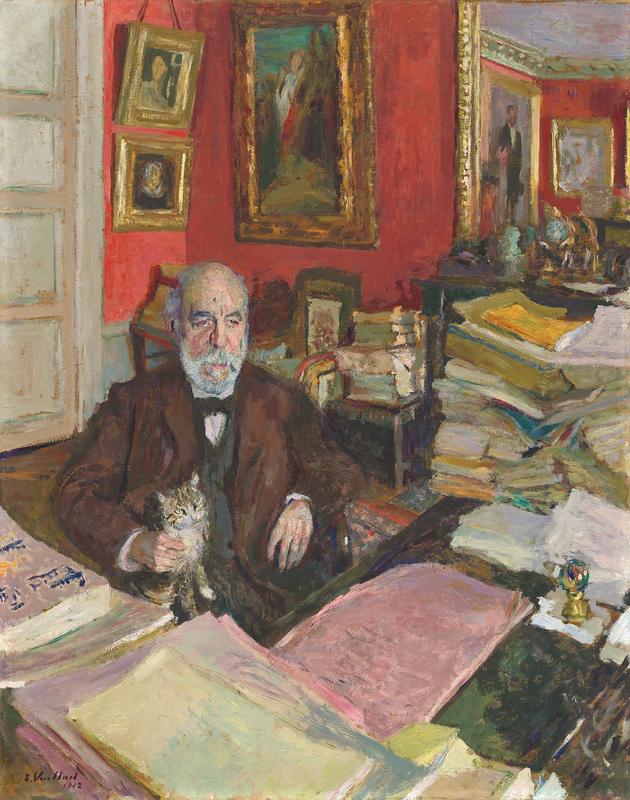More about Théodore Duret

Sr. Contributor
This painting of Theodore Duret proves that if you want great art, it never hurts to kiss a little ass.
Theodore Duret, heir to a cognac fortune, art collector and critic, was one of the most ardent supporters of the Impressionists. Edouard Manet, James Abbott McNeill Whistler and Vuillard all painted portraits of Duret at various stages of his life, largely to say thanks for his public praise of their work. Maybe they were the ones kissing ass.
In his youth, Duret traveled the world, coined the term “avant-garde,” and popularized the craze for Japanese art in the West. He also narrowly escaped the guillotine. As the Second French Empire crumbled, and Paris was under siege by Prussia, Duret joined the Commune of 1871, a radical socialist group that seized power amidst the upheaval. Karl Marx called the Commune a “dictatorship of the proletariat," ironic since Duret wasn’t exactly strapped for cash. Funny how it’s so often spoiled rich boys who tend to be socialist revolutionaries. When the Commune fell, Duret fled to England, literally saving his neck.
In Vuillard’s portrait, we see the aged radical in his twilight years. Duret has slowed down considerably since his days of partying with bohemian fanatics and almost getting beheaded. His favorite wingman now is Lulu the cat. He seems to have gotten over his bourgeois rebellious phase and settled nicely into the comforts of the rich life, with the facial hair to prove it. Whistler’s portrait appears in the top right, a reminder of the dashing man about town he used to be. On the other hand, the disarray of papers in his study shows Duret hasn’t lost his passion for intellectual pursuits.
This painting has been passed around more than Taylor Swift at a boy band reunion show. After Duret died, it was bought by collectors Jos and Lucie Hessel. Jos apparently didn’t hold any grudge against Vuillard, who was openly diddling Lucie. After that, it passed improbably to a museum in Algeria, then back to the Hessels, through a number of high-end galleries, and finally into the hands of Chester Dale. Chester was an investment banker and semi-professional athlete who collected art and railroads. Some people collect pez dispensers, others railroads...not like it’s a big deal or anything. This was one of 88 paintings he donated to the National Gallery of Art upon his death in 1962. Maybe the 1% ain’t so bad after all.












